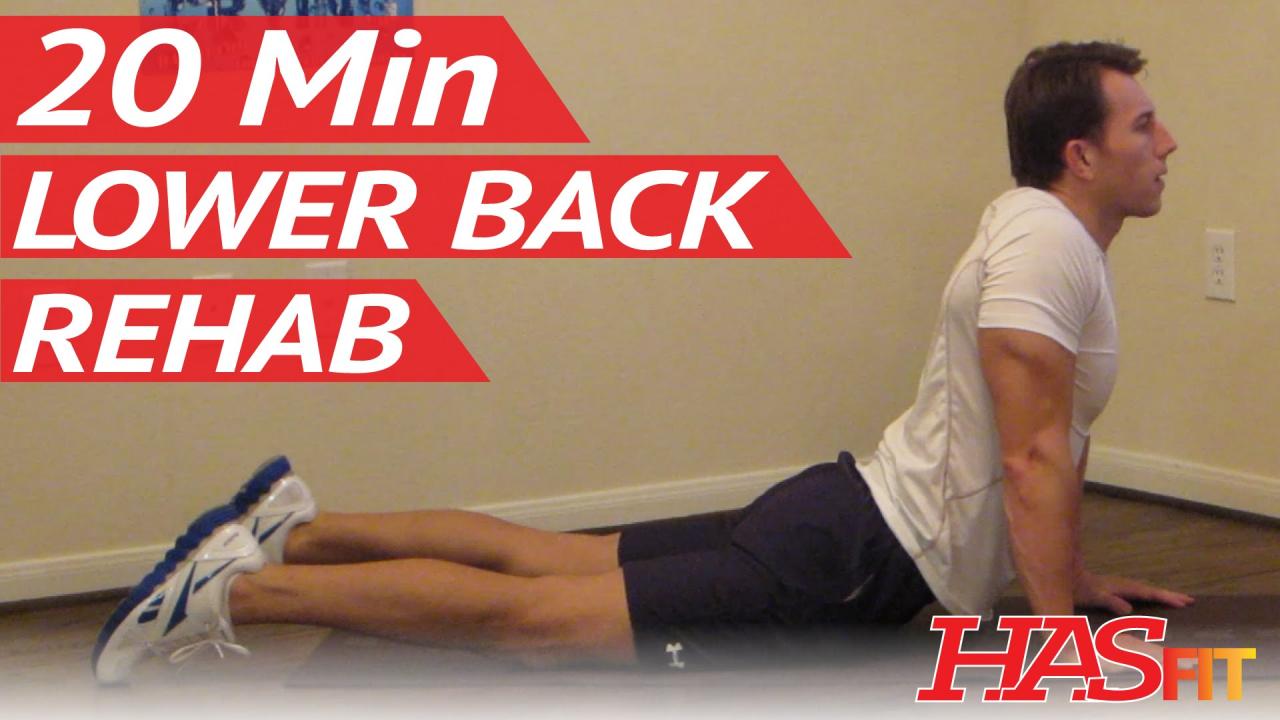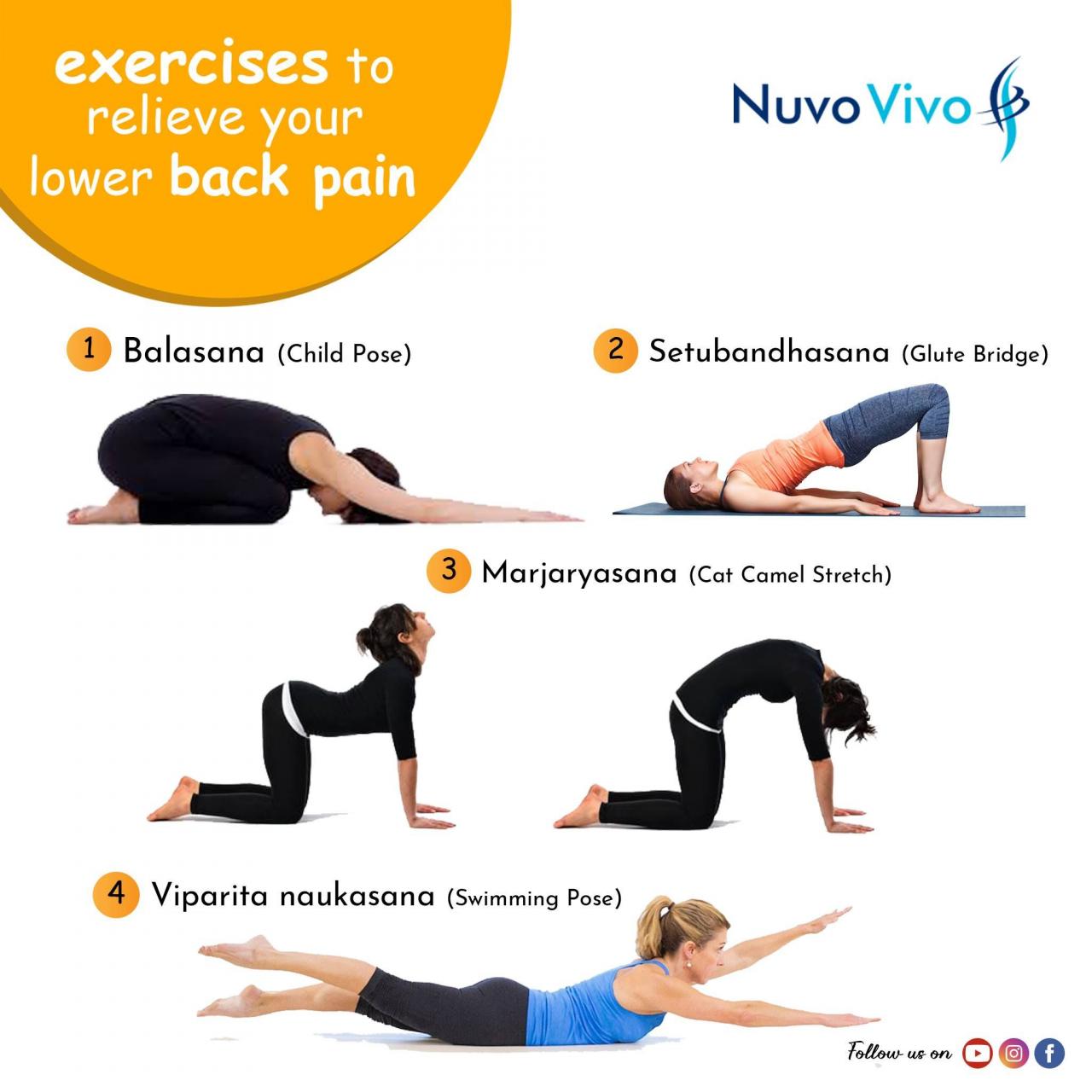
Lower back exercises at home are an effective way to alleviate pain, enhance flexibility, and strengthen your core. Whether you’re a fitness enthusiast or simply seeking to improve your overall well-being, this guide provides a comprehensive overview of lower back exercises that can be easily incorporated into your home workout routine.
Back pain is a common complaint, and one of the potential causes is stiff and tight back muscles . When these muscles become tense, they can put pressure on the nerves and cause pain. Tightness in the back muscles can be caused by a variety of factors, including poor posture, prolonged sitting, and lack of exercise.
With a variety of exercises targeting different muscle groups and flexibility levels, this guide empowers you to customize your workouts based on your specific needs. Each exercise is meticulously described with step-by-step instructions, ensuring proper form and maximizing benefits. Discover how regular lower back exercises can transform your physical health and well-being.
Lower Back Exercises at Home

Lower back exercises are essential for maintaining a healthy and strong back. They can help to relieve pain, improve posture, and prevent injuries. There are a variety of lower back exercises that can be done at home, making it easy to fit them into your daily routine.
Types of Lower Back Exercises, Lower back exercises at home
- Back Extensions:This exercise targets the erector spinae muscles, which run along the spine and help to support the back.
- Bird Dog:This exercise works the core and lower back muscles, helping to improve stability and balance.
- Bridge:This exercise targets the glutes and hamstrings, which can help to support the lower back.
- Cat-Cow Stretch:This stretch helps to improve flexibility and range of motion in the lower back.
- Dead Bug:This exercise targets the core and lower back muscles, helping to improve stability and control.
- Glute Bridge:This exercise targets the glutes and hamstrings, which can help to support the lower back.
- Hamstring Stretch:This stretch helps to improve flexibility and range of motion in the hamstrings, which can help to prevent lower back pain.
- Knee-to-Chest Stretch:This stretch helps to improve flexibility and range of motion in the lower back.
- Lower Back Rotation:This exercise targets the muscles that rotate the spine, helping to improve flexibility and range of motion.
- Pelvic Tilt:This exercise helps to strengthen the core and lower back muscles, which can help to improve posture and prevent pain.
- Plank:This exercise targets the core and lower back muscles, helping to improve stability and control.
- Quad Stretch:This stretch helps to improve flexibility and range of motion in the quads, which can help to prevent lower back pain.
- Seated Spinal Twist:This exercise targets the muscles that rotate the spine, helping to improve flexibility and range of motion.
- Side Plank:This exercise targets the core and lower back muscles, helping to improve stability and control.
- Superman:This exercise targets the erector spinae muscles, which run along the spine and help to support the back.
- Wall Sit:This exercise targets the quads, glutes, and hamstrings, which can help to support the lower back.
Final Summary

Incorporating lower back exercises into your home workout routine is a proactive step towards maintaining a healthy and pain-free back. By following the guidelines and tips Artikeld in this guide, you can effectively address lower back pain, improve flexibility, and enhance your overall fitness.
Remember, consistency and proper form are key to unlocking the full benefits of these exercises. Embrace the journey towards a stronger and more resilient lower back.
FAQ Overview: Lower Back Exercises At Home
How often should I perform lower back exercises?
For optimal results, aim to perform lower back exercises 2-3 times per week, allowing for adequate rest and recovery between workouts.
Can lower back exercises worsen my pain?
If you experience any pain or discomfort during an exercise, stop immediately and consult a healthcare professional. Proper form is crucial to avoid exacerbating pain.
How long should I hold each exercise position?
As Mother’s Day approaches, heartfelt messages of love and gratitude are being shared. From sweet happy mothers day wishes to warm greetings for sisters, the day is celebrated with expressions of appreciation. Even those who may not be able to physically embrace their mothers can extend their love with virtual messages saying, ” happy mother’s day to you too .”
Hold each position for 10-15 seconds, gradually increasing the hold time as you progress.






